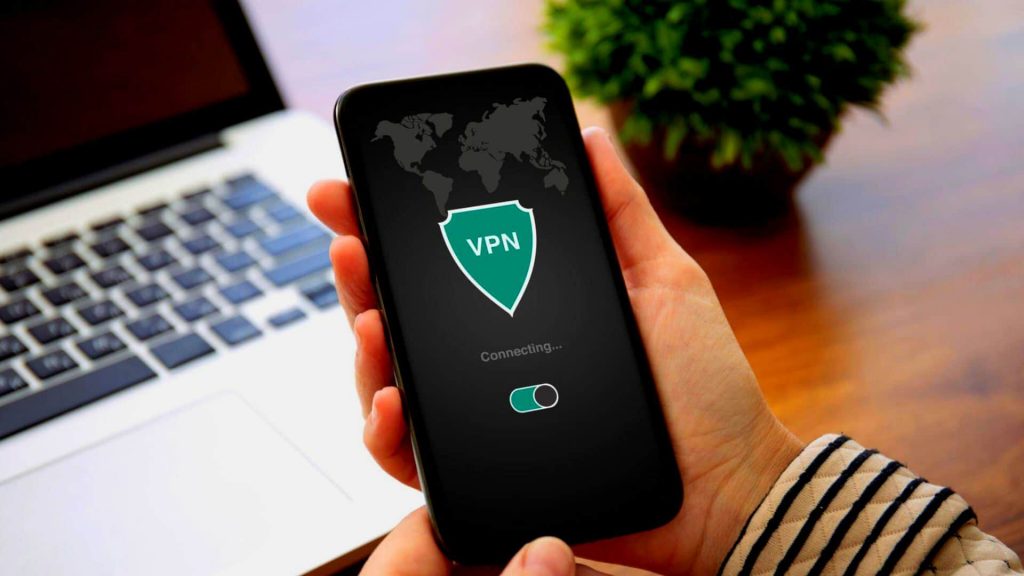A Virtual Private Network (VPN) is a private network that uses a public network (usually the Internet) to connect remote users or sites. This is a step by set guide on How to Create VPN in AWS.
VPN helps you to securely browse the Web and also use other Internet services as if they were on your machine. VPNs use a variety of security methods to ensure that private information is kept safe from prying eyes.
A VPN service is highly recommended for safe browsing because it redirects all your traffic through an encrypted tunnel, so nobody in a public WiFi may intercept your data. In this article, we will show you how to create VPN tunnels on AWS. Creating a VPN in AWS is a two-step process: first, you create a customer gateway, and then you create the VPN connection itself.
Customer Gateway
The customer gateway is a key component of Amazon Web Services (AWS). It is a virtual private network (VPN) device that provides a secure connection between your on-premises network and your AWS resources.
The customer gateway connects to the AWS VPN gateway, which then provides access to your AWS resources. The customer gateway uses industry-standard protocols such as Internet Protocol Security (IPsec) and Border Gateway Protocol (BGP) to provide a secure connection.

A customer gateway is a physical device or software application that acts as your VPN endpoint in AWS. You’ll need to configure your customer gateway with the appropriate settings for your environment.
To create a customer gateway on AWS:
• First, you’ll need to create an Amazon VPC.
• Once you have done this, you can then create a customer gateway by going to the Amazon VPC console and clicking on the ‘Customer Gateways’ link.
• From here, you’ll need to provide a name and IP address for your customer gateway.
• Once you’ve done this, you can then attach your customer gateway to your VPC and start using it.
What is AWS?
AWS is a reliable, scalable, easy-to-use web hosting service for businesses that also offers storage and computing power. It is a popular choice for businesses and individuals who want to take advantage of the benefits of cloud computing. One of the key advantages of AWS is its flexibility – users can choose from a range of services and prices to suit their needs.

Creating a VPN on AWS is a great way to securely connect to your resources in the cloud. A VPN (a virtual private network) encrypts your data and routes it through a tunnel so that it can’t be intercepted by third parties. This makes it an ideal solution for businesses or individuals who need to secure their data while using public networks.
AWS is a good choice for many reasons:
AWS is more affordable than other cloud providers: AWS has a pay-as-you-go pricing model that allows you to only pay for the services you use. There are no upfront costs or long-term contracts required.
AWS is easy to use: AWS provides a simple, user-friendly interface that makes it easy to get started with cloud computing. You can quickly deploy and manage your applications in the cloud.
AWS is scalable and reliable: AWS provides a scalable and reliable platform that can handle sudden increases in traffic or resource requirements.
What is a VPN?
A VPN, or Virtual Private Network, is a way for individuals and companies to protect your data and identities. A VPN creates a secure, encrypted connection between your computer and the internet, making it harder for hackers or government agencies to get access to your information. You can use a VPN to browse the internet anonymously, secure your Wi-Fi connection, and keep your browsing history private.

There are many different types of VPNs, and each has its advantages and disadvantages. The most important factor to consider when choosing a VPN is whether or not it will meet your needs. For example, if you are looking for a VPN to use while traveling, you will need a different type of VPN than someone who is looking for a VPN to use at home.
The three most common types of VPNs are PPTP, L2TP/IPsec, and OpenVPN.
- PPTP: PPTP is the most basic type of VPN. It uses 128-bit encryption and is one of the oldest types of VPNs. It is not as secure as other types of VPNs, but it is very fast and easy to set up.
- L2TP/IPsec: L2TP/IPsec is a more secure type of VPN that uses 256-bit encryption. It is slower than PPTP but faster than OpenVPN.
- OpenVPN: OpenVPN is the most secure type of VPN. It uses 2048-bit encryption and can be slow at times.
Setting up a VPN in AWS
If you’re looking to set up a VPN in AWS, there are a few things you’ll need to do. There are a few things you’ll need to create a VPN on AWS:
- Amazon EC2 instance
- Amazon EIP (Elastic IP)
- an Amazon VPC (virtual private cloud)
I’ll walk you through each of these steps so that you can get up and running quickly and easily.
Although it’s possible to set up a VPN server without any cloud involvement, using Amazon Web Services (AWS) to host your VPN gives you several advantages.

First, if you have a dynamic IP address at home, an AWS VPN can give you a static IP address that will never change.
Second, hosting your VPN in the cloud means that you can connect to it from anywhere in the world, not just from your home. Finally, using AWS provides you with a level of security and reliability that you may not have at home.
If you’re interested in setting up a VPN in AWS, here’s what you need to do:
- Create an Amazon VPC
- Configure Your VPN Connection
- Set Up Your Amazon EC2 Instance
- Configure Your Security Group
- Download and Install the OpenVPN Client
Here I’m attaching a very amazing video tutorial of NetworkChuck, where he shows How to create VPN in AWS. If you are having issues in setting up VPN server on Amazon AWS watch this video:
Connecting to the VPN
- Log in to the AWS Management Console and select the Amazon VPC service.
- In the left-hand sidebar, select VPN Connections and click the Create VPN Connection button.
- On the configuration page, select the VPC that you want to connect to and choose a customer gateway. Amazon provides a default customer gateway, or you can create your own.
- Specify the static route or routing table for your VPC. This will route all traffic destined for your VPC through the VPN connection.
- Configure your security settings and choose the type of encryption that you want to use.
- Select the Create VPN Connection button and wait for the status of the connection to change from pending to available.
- Once the connection is available, you can download the configuration files needed to connect to it using different client software.
Conclusion
So there you have it — a complete guide on how to create a VPN server on AWS. Now that you know how to create a VPN in AWS, you can securely connect to your resources and keep your data safe.
By following the steps in this guide, you can easily set up a VPN that will work for your needs. If you’re looking for an extra layer of security for your online activity, consider setting up a VPN server on AWS today.
Also Read: Top 5 Best Laptops For Gamers & Programmers – 2022
- Understanding Backflow Testing and Annual Fire Alarm Inspections: Essential for Safety and Compliance - April 1, 2025
- Preamplifiers – Significance, Types, Benefits - January 10, 2025
- The Science of Bass: Understanding How Subwoofers Work - January 10, 2025

